Are you curious about how many calories are in a delicious slice of pepperoni pizza? Well, wonder no more! In this article, we will explore the calorie content of this popular pizza topping.
You’ll learn about the factors that influence the number of calories, discover the average calorie count per slice, and even find some healthier alternatives.
So, if you’re looking to balance your love for pizza with a healthy diet, keep reading!
Prefer Audio Version?

The Basics of Pepperoni Pizza Calories
To understand the basics of pepperoni pizza calories, you need to know how the ingredients and cooking process contribute to the final calorie count. Let’s start with the crust.
Traditional pizza crust is made from flour, water, yeast, salt, and sometimes oil. These ingredients are relatively low in calories, but the crust can become higher in calories depending on the size and thickness. Thicker crusts tend to have more calories than thin crusts.
Moving on to the sauce, it typically consists of tomatoes, herbs, and spices. The calorie content of the sauce is generally low, but some varieties may have added sugar or oil, which can increase the calorie count. Additionally, the amount of sauce used can also affect the overall calorie content.
Now, let’s talk about the cheese. The most common cheese used on pepperoni pizza is mozzarella. It’s rich and creamy, but also high in calories. The amount of cheese used can vary, but the more cheese you have, the more calories you’ll consume.
Finally, we come to the star of the show – pepperoni. This cured meat is deliciously salty and fatty, which means it’s high in calories. The number of pepperoni slices and their thickness will determine the calorie count.
When it comes to cooking, the method used can also impact the calorie count. Traditional brick oven cooking tends to result in a slightly lower calorie content compared to deep-fried or pan-fried pizzas.

Factors Influencing Calorie Content
Now, let’s talk about the factors that influence the calorie content of a slice of pepperoni pizza.
One important factor is the variations in ingredients used, such as the type of crust, cheese, and sauce.
The cooking methods employed, like baking or frying, can also impact the calorie count.
Ingredient Variations Impact Calories
You can see how the calorie content of a slice of pepperoni pizza can vary based on different ingredient variations. The type and amount of cheese, crust thickness, and sauce used can all impact the calorie count.
For example, a slice of thin crust pepperoni pizza with less cheese and a lighter sauce will have fewer calories compared to a slice of deep-dish pepperoni pizza with extra cheese and a heavy sauce. Additionally, the size of the slice also plays a role. A smaller slice will naturally have fewer calories than a larger one.
Toppings like vegetables or lean meats can also affect the calorie content. Opting for healthier toppings can help reduce the calorie load without sacrificing flavor.
Cooking Methods Affect Calories
Different cooking methods can significantly impact the calorie content of a slice of pepperoni pizza. Here are four factors that influence the calorie content:
- Baking: Baking pizza in an oven at a high temperature can result in a crispy crust and slightly lower calorie content due to some fat being rendered out during the cooking process.
- Deep frying: Deep frying pizza is a popular method that creates a crunchy texture and adds extra calories. The pizza absorbs oil during frying, increasing its calorie content.
- Grilling: Grilling pizza on a barbecue or grill pan can give it a smoky flavor and a charred crust. The high heat can also reduce the cooking time, resulting in a slightly lower calorie content compared to baking.
- Broiling: Broiling pizza under direct heat can create a crispy and slightly charred top. This method may result in a slightly higher calorie content due to the toppings becoming more concentrated and potentially adding more calories.
Understanding how the cooking method affects calorie content can help you make informed choices when enjoying a slice of pepperoni pizza.
Average Calorie Count of a Slice
An average slice of pepperoni pizza contains a specific number of calories. The calorie count can vary depending on the size of the slice and the specific ingredients used. On average, a slice of pepperoni pizza contains around 285-350 calories. This estimate is based on a slice that’s approximately 1/8th of a 14-inch pizza. Keep in mind that larger slices or pizzas with extra toppings may have a higher calorie count.
The calorie count of a slice of pepperoni pizza primarily comes from three main components: the crust, the cheese, and the pepperoni. The crust is typically made from flour, water, yeast, and sometimes oil. It provides the base of the pizza and contributes to the calorie count. Cheese, usually mozzarella, is a significant calorie contributor as well. The amount and type of cheese can vary, affecting the overall calorie count. Finally, the pepperoni adds additional calories due to its fat content.
To get a more accurate estimate of the calorie count in a slice of pepperoni pizza, it’s essential to consider the specific brand or restaurant you’re ordering from. Many pizza places provide nutritional information for their menu items, including the calorie count. If you’re concerned about the calorie content, you can also try making your own pizza at home. This allows you to have control over the ingredients and portion size.
Read more about how many calories in a slice of costco pizza.

For a healthier option, consider making modifications to your pepperoni pizza. By making a few simple changes, you can enjoy a delicious pizza while reducing the calorie and fat content. Here are four ideas to help you create a healthier version of your favorite pizza:
- Choose a Thin Crust: Opt for a thin crust instead of a thick, doughy one. Thin crusts generally have fewer calories and less fat. You can also try whole wheat or cauliflower crusts for added nutritional benefits.
- Load Up on Veggies: Instead of piling on the pepperoni, load your pizza with a variety of colorful vegetables. Bell peppers, onions, mushrooms, spinach, and tomatoes are great options. Not only will this add flavor and texture to your pizza, but it will also increase the fiber and nutrient content.
- Use Lean Protein: Instead of traditional pepperoni, consider using leaner proteins like grilled chicken, turkey sausage, or tofu. These options are lower in saturated fats and can still provide the satisfying taste and texture you crave.
- Control the Cheese: Cheese is often a major contributor to the calorie and fat content of a pizza. Try using reduced-fat or part-skim cheese, and use it sparingly. Alternatively, you can experiment with other cheese alternatives, such as almond or cashew-based cheeses.
Balancing Pizza Consumption in a Healthy Diet
To maintain a balanced and healthy diet, it’s important to consider your pizza consumption and make mindful choices. While pizza can be a delicious treat, it’s also important to be aware of its potential impact on your overall health. Here are some tips to help you balance pizza consumption in a healthy diet.
First, portion control is key. Instead of devouring an entire large pizza by yourself, opt for smaller servings. Enjoy a slice or two and pair it with a side salad or some vegetables to add more nutritional value to your meal. This way, you can satisfy your pizza craving without overloading on calories, fat, and sodium.
Secondly, choose healthier toppings. While pepperoni and sausage may be popular choices, they’re high in saturated fat and sodium. Instead, opt for leaner proteins like grilled chicken or shrimp. Load up your pizza with colorful vegetables like bell peppers, mushrooms, and onions, which add flavor and nutrients.
Additionally, consider the crust. Thin crust pizzas tend to have fewer calories and carbohydrates compared to deep-dish or stuffed crust options. If you have the choice, go for a whole wheat or cauliflower crust, which can provide more fiber and nutrients.
Lastly, be mindful of your overall pizza frequency. Enjoying pizza occasionally as a treat is perfectly fine, but consuming it too frequently can lead to an imbalanced diet and potential health issues. It’s important to incorporate a variety of nutritious foods into your diet to ensure you’re meeting your nutritional needs.
Enjoying Pepperoni Pizza in Moderation
Now that you know the number of calories in a slice of pepperoni pizza, it’s important to consider portion control and satisfaction.
Enjoying pizza in moderation allows you to indulge without compromising your health goals.
Find a balance between treating yourself and maintaining a healthy diet to make the most of your pizza cravings.
Portion Control and Satisfaction
You can enjoy pepperoni pizza in moderation by practicing portion control and finding satisfaction in a balanced meal. Here are four tips to help you achieve this:
- Use a smaller plate: By serving your pizza on a smaller plate, you can trick your brain into thinking you’re eating a larger portion. This can help you feel more satisfied with a smaller amount.
- Pair it with a salad: Adding a side salad to your meal can increase the overall volume and nutrient content, while keeping the calorie count lower. The fiber from the vegetables will also help you feel fuller for longer.
- Mindful eating: Take the time to savor each bite and pay attention to your body’s hunger and fullness cues. This can help prevent overeating and allow you to enjoy your pizza without guilt.
- Plan ahead: If you know you’ll be having pizza for dinner, make sure to balance your other meals throughout the day. Opt for lighter, nutrient-dense options to offset the indulgence.
Balancing Indulgence and Health
Achieving a balance between indulgence and health is key when it comes to enjoying pepperoni pizza in moderation. While it’s tempting to indulge in a whole pizza, it’s important to remember that moderation is the key to maintaining a healthy lifestyle.
By being mindful of your pizza consumption and making smart choices, you can still enjoy the deliciousness of pepperoni pizza without sacrificing your health goals. Consider opting for a smaller portion size or sharing a pizza with a friend. Load up on veggie toppings to add nutrients and decrease the calorie density.
And don’t forget to balance your pizza indulgence with regular exercise and a balanced diet. Remember, it’s all about finding a healthy balance and enjoying your favorite pizza in moderation.
Frequently Asked Questions
Can You Provide a Recipe for Making a Healthier Version of Pepperoni Pizza at Home?
What Are Some Common Toppings That Can Be Added to a Slice of Pepperoni Pizza to Increase Its Nutritional Value?
Is It Possible to Estimate the Calorie Content of a Whole Pepperoni Pizza Based on the Average Calorie Count of a Single Slice?
Are There Any Specific Pizza Chains or Restaurants That Offer Low-Calorie Options for Pepperoni Pizza?
Can You Provide Tips on How to Incorporate Pepperoni Pizza Into a Balanced Diet Without Exceeding Daily Calorie Limits?
Conclusion
In conclusion, pepperoni pizza can be enjoyed as part of a balanced diet, but it’s important to consume it in moderation.
A slice of pepperoni pizza typically contains around 300-400 calories, depending on the size and thickness of the crust.
Making healthier modifications, such as opting for a thin crust or adding more vegetables, can help reduce the calorie content.
Remember to balance your pizza consumption with other nutritious foods to maintain a healthy lifestyle.
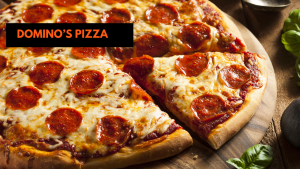
How Many Calories in a Slice of Domino’s Pizza
Craving a slice of Domino’s pizza? Wondering just how many calories you’ll be consuming? Look no further! In this article, we’ll break down the calorie
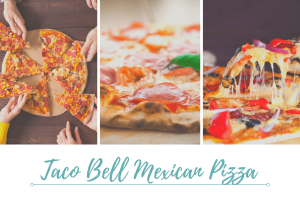
How Many Calories in Taco Bell Mexican Pizza
Craving a Taco Bell Mexican Pizza and curious about the calorie count? Look no further! In this article, we break down the exact number of

How Many Calories in a Slice of Pepperoni Pizza?
Are you curious about how many calories are in a delicious slice of pepperoni pizza? Well, wonder no more! In this article, we will explore

How Many Calories in a Slice of Costco Pizza?
Do you ever wonder how many calories are in a slice of Costco pizza? Well, you’re in luck! In this article, we’ll break down the
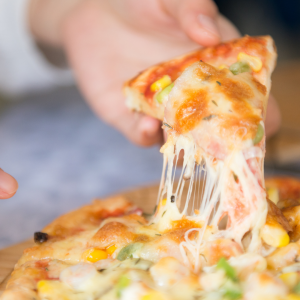
How Many Calories in a Slice of Cheese Pizza?
Are you curious about how many calories are in a slice of cheese pizza? Well, you’re in the right place! In this article, we’ll break
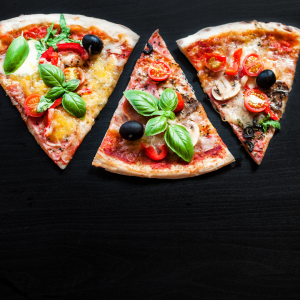
How Many Calories in 3 Slices of Pizza
Are you curious about how many calories you consume when you indulge in three slices of pizza? Wonder no more! In this article, we will

How Many Calories Are in a Slice of Pizza
Do you love indulging in a slice of pizza but worry about the calorie count? Look no further! In this article, we’ll break down the

How Many Calories In A Burger?
Are you curious about how many calories are in a burger? Well, look no further! In this article, we will break down the calorie content

How Many Calories In A Slice Of Margherita Pizza?
Curious about the calorie count in a slice of margherita pizza? Look no further! In this article, we’ll delve into the world of this classic

How Many Carbs In Gluten Free Pizza?
Are you a fan of gluten-free pizza but concerned about the number of carbs it contains? Look no further! In this article, we will explore

One Slice Of Domino’s Pepperoni Pizza Calories
Are you a pizza lover who can’t resist the mouthwatering taste of Domino’s Pepperoni Pizza? If so, it’s important to understand the impact that one
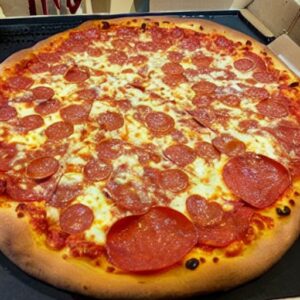
How Many Calories In A Large Cheese Pizza
Pizza has been a popular dish for centuries and continues to be one of the most beloved foods. But how many calories come with that
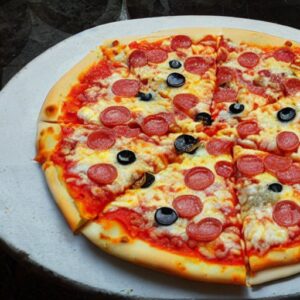
How Many Calories In A Frozen Pizza
Everyone loves a tasty frozen pizza, but have you ever stopped to consider how many calories are in it? Most of us don’t think twice

How Many Calories Are In 2 Slices Of Pepperoni Pizza
Pizza, oh pizza. What a delicious treat! Whether it’s for a late night snack or part of an Italian dinner feast, it always hits the


